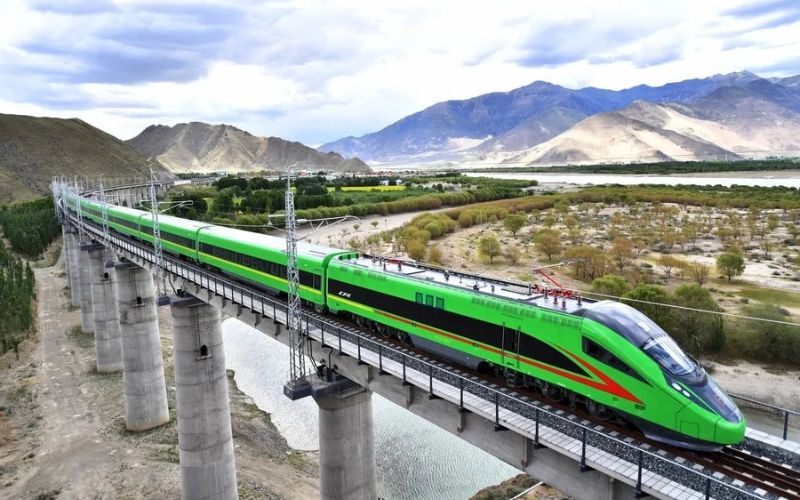
Tibet's railway infrastructure has experienced a remarkable surge, expanding from 701 km in 2012 to 1,359 km in 2022, as unveiled in a recent white paper from China's State Council Information Office. The introduction of the Fuxing high-speed train series now connects Tibet with Lhasa, its capital, showcasing the Chinese government's commitment to regional transportation enhancements.
However, amidst these developments, scrutiny emerges regarding the strategic implications of the Lhasa-Shigatse Expressway. While the infrastructure projects are presented as developmental endeavors, concerns arise due to their dual civilian-military purpose, potentially aiding swift military deployment in strategically sensitive areas.
The region's geopolitical positioning near neighboring nations prompts suspicions about China's intentions, fueling worries about territorial disputes. These worries escalate given Tibet's historical occupation, cultural suppression, and human rights abuses by the Chinese government, including forced relocations and erosion of Tibetan culture.
The construction and development in Tibet occur amidst broader worries about human rights abuses and cultural assimilation. The Chinese government's policies in Tibet, including forced relocations and erosion of Tibetan culture, have drawn international criticism.
China's investments in Tibet, spanning infrastructure, energy, urbanization, mining, and military structures, aim to strengthen control over a region it considers occupied. However, concerns persist about the cultural erosion due to intermarriage between Tibetan and Chinese communities, potentially diluting traditional Tibetan practices and language.
The Tibet Policy Institute suggests China's strategy involves strict control and suppression to weaken Tibetan resistance. The increasing presence of Chinese influences, including migrant workers and rapid urbanization, contributes to this cultural blending, further impacting Tibetan identity.
China's infrastructure investments in Tibet serve multiple purposes but are perceived as part of a broader strategy to solidify control, sparking diplomatic and human rights concerns that warrant continued international attention and dialogue.
Edited and collated by Team TRC